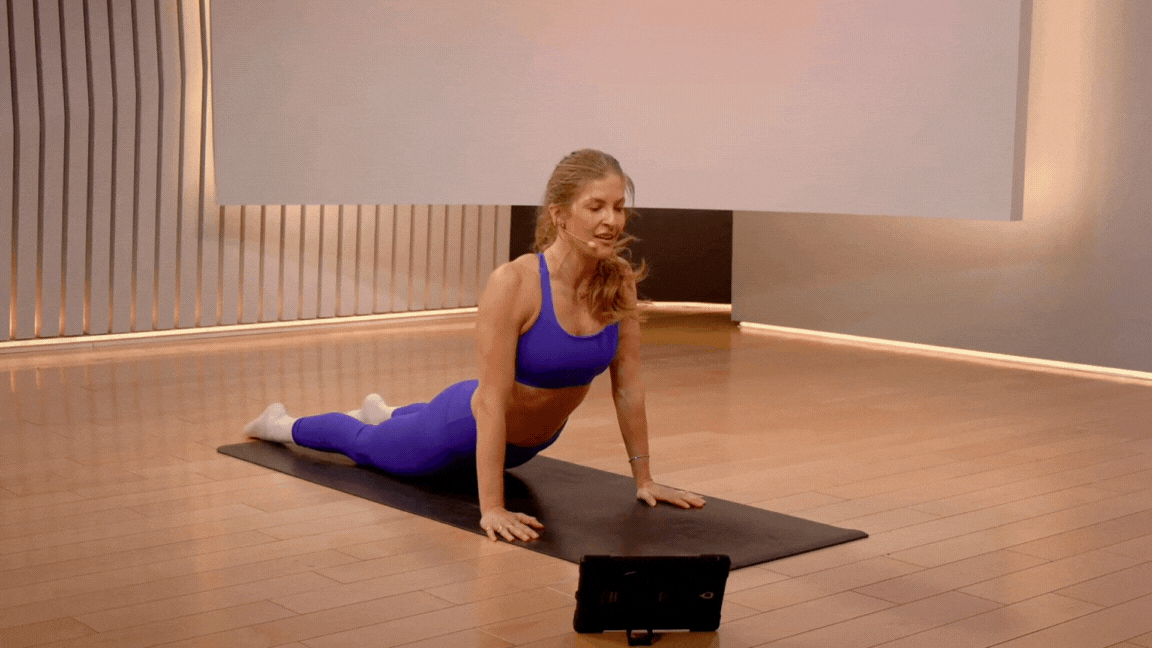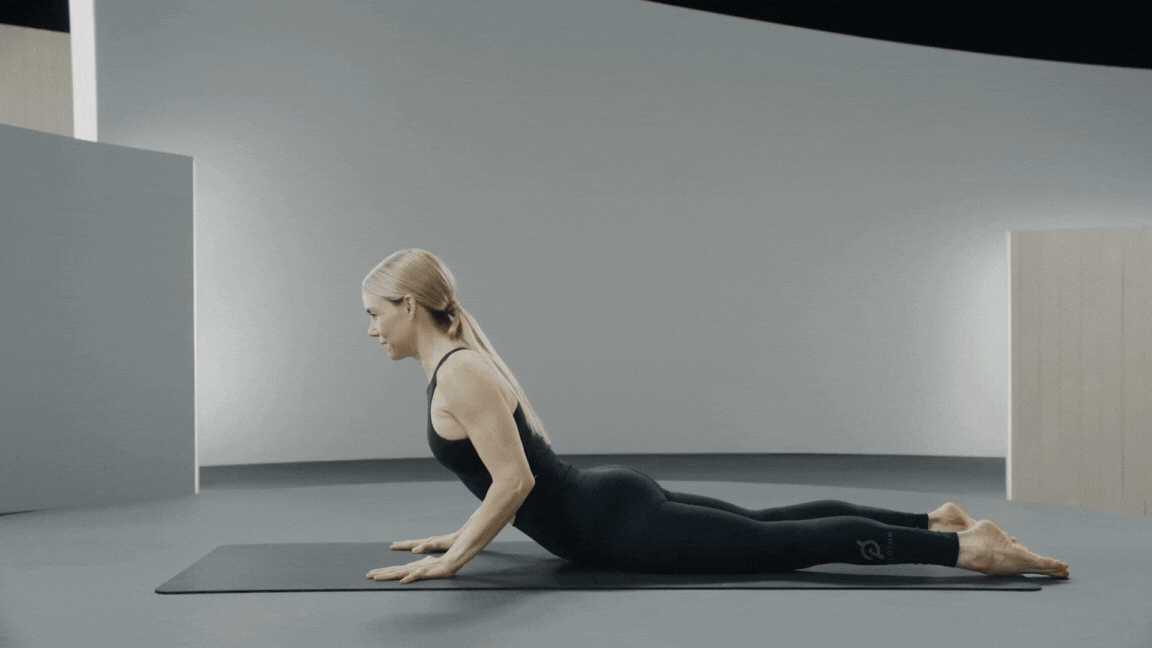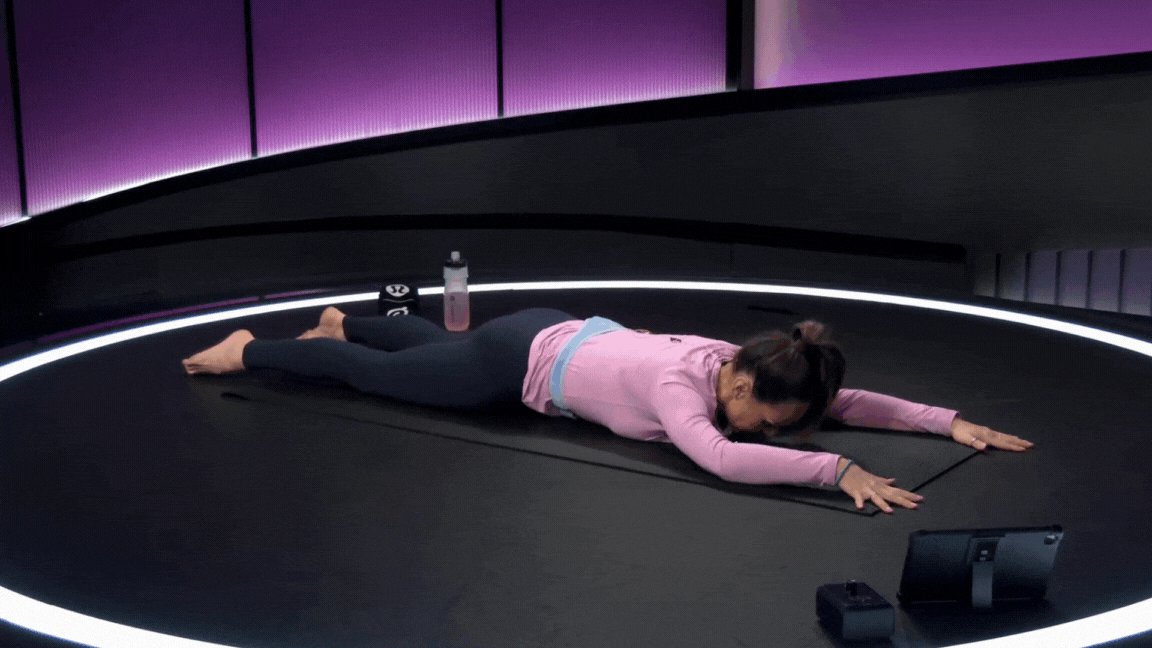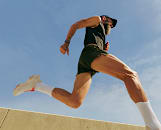
Lorenzo Capunata via Getty Images
Swan Dive Is the Advanced Pilates Move That’ll Supercharge Your Postural Muscles
Take flight with this back- and core-strengthening move.
By Michele Ross•
What Is the Swan Dive Exercise In Pilates?
Which Muscles Does Swan Dive Work?
Benefits of Adding Swan Dive to Your Pilates Practice
How to Do Swan Dive Properly
How to Progress Toward Swan Dive
Safety Tips and Mistakes to Avoid During Swan Dive
The Takeaway
Swan dive is a lesser-known but incredibly powerful pose in the Pilates repertoire that can counteract poor posture, strengthen and mobilize your spine, engage your deep core, and then some. This dynamic spinal extension can be tricky to master, however, as it requires balance, strength, and grace in equal measure.
Discover more ways to reach your goals with Peloton
Keep reading to learn more about this advanced Pilates move—including its key benefits, instructions to do it safely, and how to work your way up to the full expression.
What Is the Swan Dive Exercise In Pilates?
According to Peloton instructor Mila Lazar, you can think of swan dive as a marriage between the shape of Cobra Pose and the controlled strength of a superhuman hold, adding a rhythmic rocking motion in its full expression.
“In this pose, the body becomes a balanced arc, lifting and diving forward and backward from the center—all while maintaining core engagement to control the movement,” Mila explains. “It’s a powerfully integrated move that trains spinal articulation, coordination, and the often undertrained backside of the body.”
You’ll mainly see this move during mat Pilates workouts, but you can also do scaled-back swan dive variations on a Reformer using a sitting block and holding onto the footbar.

Peloton App
Access thousands of classes with no equipment needed.
Which Muscles Does Swan Dive Work?
Swan dive primarily targets the spinal extensors (erector spinae) and posterior chain (the muscles that run along the whole back side of your body), says Tegan Hayek, a doctor of physical therapy and Pilates instructor at Mims Method Physical Therapy in New York City. The former helps maintain the extended position in your thoracic spine (which runs from the bottom of your neck to your mid-back), while your glutes and hamstrings contract to lift your legs off the mat.
“The swan dive also challenges the deep abdominal muscles to stabilize the upper and lower body,” Hayek adds.

Benefits of Adding Swan Dive to Your Pilates Practice
There are plenty of benefits associated with swan dive—so long as you practice safely and work your way up to this advanced Pilates move.
Spinal Extension and Mobility
First and foremost, swan dive both strengthens and mobilizes the spine in extension. It’s a worthy antidote for those who sit for long periods of time (including office workers and sedentary folks) and maintain forward-flexed postures (like hunching over your phone).
“Swan dive helps restore natural spinal curves, promotes healthy movement patterns, and improves overall posture,” Mila shares. In addition, Hayek says that this pose can improve postural endurance, or your ability to maintain an upright torso for longer periods of time. Simply put, it has the potential to be a game-changer for the health and integrity of your spine.
Posterior Chain Strength
“Swan dive builds strength, control, and mobility through the entire posterior chain,” says Mila, “especially the back extensors, glutes, and hamstrings, which are often underused.” Activating these muscles can help to improve their strength and endurance, adds Hayek, which in turn can support spinal stability and reduce the risk of injury.
Moreover, a 2021 review published in Sports Medicine Open found that posterior chain exercises were significantly more effective than general exercise in reducing levels of pain and disability, and increasing the strength of the thoracic, lumbar, and hip extensor muscles in recreationally active and sedentary people with chronic lower back pain.
Core Integration and Control
While swan dive is a spinal extension exercise above all, it still requires engaging the deep core muscles, including the transverse abdominis (deep abs), multifidus (a narrow muscle on your back that helps stabilize your spine), diaphragm (which aids breathing), and pelvic floor (a “hammock” of muscle that support your spine and hips while holding your pelvic organs in place).
“The lift, control, and catch of the rocking motion train the entire core to work in harmony [from] front to back,” Mila explains. Benefits associated with deep core strength include, but aren’t limited to: better posture and balance, a reduced risk of lower back pain, and enhanced athletic performance.
Breath Control
Swan dive involves inhaling on the lift and exhaling on the dive. According to Mila, this pairing of breath to movement supports neuromuscular coordination and reinforces Pilates principles of control and flow.
Body Awareness
Since the full expression of swan dive requires you to take “flight,” you need to have a solid grasp of where your center is so you can safely ground into and move from it. This enhances proprioception (your body’s ability to sense its position and movement in space), balance, and full body awareness, “all of which translate to better functional movement and athletic performance,” Mila says.
Injury Recovery
Swan dive is sometimes used in rehabilitative settings to improve strength after a low back, hip, or even shoulder injury, Hayek says. Of course, consult with a physical therapist first to see if this exercise could help (or hinder) your recovery before trying it on your own.

How to Do Swan Dive Properly
Below, Mila shares step-by-step instructions for how to do swan dive with proper form on a mat.
1. Ground Down
Lie face down on a mat with your legs extended and feet hip-width distance apart. Place your hands on the floor just in front of your shoulders, with elbows slightly bent and close to your sides.
2. Engage Your Core
Draw your abdominals in and up, lifting the area around your navel slightly away from the mat. There should be enough space that only your hand can fit between your stomach and the floor. “This deep core engagement is crucial for supporting your lower back throughout the movement,” Mila notes.
3. Swan Dive Prep: Inhale, Lift, and Lengthen
On an inhale, press lightly into your hands and lift your chest off the mat, lengthening your spine upward and forward. Keep a neutral spine and your core engaged. Keep the back of your neck long and your elbows slightly bent, and think about gliding your shoulders down your back.
4. Exhale, Release, and Take Flight
On an exhale, lift your hands off the mat and extend your arms forward as your upper body rocks forward in a controlled arc. Simultaneously, your legs will lift slightly off the mat as your weight shifts forward. Imagine your body forming a curved bow shape, balancing on its center.
5. Rock Back and Repeat
Inhale as you use the momentum created by your lower body, lifting your chest and arms as your legs lower toward the floor. Allow your body to rock backward and lift your upper body into extension, maintaining control through your core and spine. “It’s not important how high you lift, but how well you control the transition between extension and dive,” Mila shares. “Always prioritize precision, breath, and spinal length over force or height.”
Repeat the rocking motion, using your inhale to lift and exhale to dive. Keep the rhythm smooth, maintain equal breaths, and lead with length instead of momentum. On your final rep, catch yourself in the chest-lifted position by placing your hands on the floor just in front of your shoulders, then gently lower your chest down to the mat with control.

How to Progress Toward Swan Dive
Since swan dive is an advanced pose, don’t expect to nail it on your first go. Instead, work your way up slowly with the following swan dive prep poses and variations to build strength, control, and confidence without sacrificing form or safety.
According to Hayek, Pilates beginners and those who are new to swan dive should first work on spinal extension mobility (required to get into the position) and strength (to hold the Swan while rocking).
She advises starting out with exercises that use smaller ranges of motion, such as:
Cat Cow: Cat Cow helps warm up the spine and work into flexion and extension.
Pilates Swimmer: This move is like a superhuman, where you’re lying on your stomach with your arms and legs lifted, but you’re alternating between lifting your opposite arm and leg in a swimming motion. Swimmer allows you to work on grounding into and lifting from your center.
Mini Cobra: With your forearms on the mat, this gentle backbend helps you begin to work into spinal extension.
To prepare for swan dive, Mila advises following the instructions above, but pausing after step three so your legs are still grounded (for a visual, see the above demonstration by Mila). “Feel how the stomach is off the floor as you lie on the ground and how slowly it touches the ground while lengthening and lifting the chest,” she shares. “Focus on spinal length and abdominal support, which builds the essential strength and control [for this pose] in the back and core.”
Once you’re ready to progress, she suggests lifting one arm at a time, one inch off the mat, while holding the extension. “This is a perfect stepping stone since it challenges the posterior chain without the complexity of rocking,” says Mila.
When you can easily lift and hold with control, you can level up to mild rocking motions. “I’ll introduce small, controlled rocking motions just an inch or two forward and back, staying in the extended position,” Mila continues. “This develops timing and balance without going fully ‘airborne.’”
Try Swan Dive In a Pilates Class On the Peloton App
Safety Tips and Mistakes to Avoid During Swan Dive
No matter if you’re naturally flexible, a Pilates pro, or neither, warming up and easing into swan dive is essential. Once you’re in it, also be sure to maintain measured inhales and exhales. “As with all Pilates exercises, it is important to continue controlled breathing throughout the movement,” Hayek shares.
Minding these yays, Mila also offers a few nays, or common mistakes to avoid:
Overusing the lower back. According to Mila, this happens when you hinge too much from the lumbar spine (aka lower back) without engaging the rest of the posterior chain. The fix? “Lengthen the spine, engage glutes and abdominals, and distribute the extension evenly from the thoracic spine upward,” she shares.
Failing to engage the core. “Without abdominal activation in swan dive, the lower back becomes vulnerable and control is lost,” Mila warns. Remember to lift your stomach away from the mat before rocking, creating a gap the width of a hand, and activating your core throughout the entirety of the pose.
Straining the neck. Mila advises against overextending your neck. This occurs when you lift your chin too high or use it to lead the motion, thereby compressing the cervical spine. “I encourage a long neck and [keeping your] gaze slightly forward and down,” she says. “Lead with your crown, not your chin.”
Moving with momentum instead of muscle. When practicing swan dive, it’s easy but ill-advised to throw yourself into the movement. “Use breath as the metronome: Inhale to lift and exhale to dive,” Mila instructs. “Go back to small rocking and scale up only when you can control the motion.”
Lastly, it’s best for some people to avoid swan dive. Per Hayek, this includes those who are unable to lie on their stomach or have been advised to avoid spinal extension. Other contraindications include pregnancy, spinal stenosis, and osteoporosis.
The Takeaway
While swan dive might not be among the most common or beginner-friendly Pilates exercises, it’s incredibly rewarding for your practice and your body alike to achieve the full expression. However, it bears repeating that swan dive is an advanced pose that requires properly warming up and strengthening the spine, posterior chain, and core before, well, diving into it. For some, this might look like warming up with other Pilates moves and swan dive prep poses in a single session. For others, it might require working on the fundamentals consistently over time.
On a parting note, Mila emphasizes that swan dive isn’t just about extension; it also requires integration. “It’s a full-body conversation between strength, control, and breath,” she concludes. Patience and practice beget progress, and it may be helpful to channel the elegance of a swan as you work your way up to—and eventually hold—this challenging yet gratifying pose.
This content is for informational and educational purposes only and does not constitute individualized advice. It is not intended to replace professional medical evaluation, diagnosis, or treatment. Seek the advice of your physician for questions you may have regarding your health or a medical condition. If you are having a medical emergency, call your physician or 911 immediately.
Build full-body strength
Enter your email to get articles, instructor tips, and updates from Peloton sent to your inbox.
By providing your email address, you agree to receive marketing communications from Peloton.
For more about how we use your information, see our Privacy Policy.













